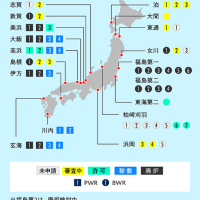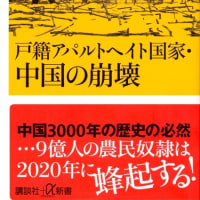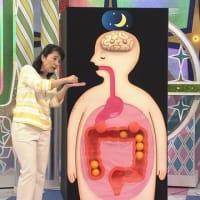09/24/2012 Tokyo Electric Power . Hiroaki Koide Mr. . Kyoto University Research Reactor Institute.
http://www.best-worst.net/news_aipzFKbXLW.html■ -- 10 million Bq/h! 240 million Bq of every day!
On September 24, 2012, the Tokyo Electric Power announced that 10 million Bq/h is emitting also at the September time from a Fukushima Daiichi nuclear power plant by "it is road map progress (rough mapping) over a medium-to-long period of time towards the abolition measure of the Fukushima Daiichi nuclear power plant of No. 1 to 4, etc."
the burst size (cesium) at present from a No. 1 to 3 reactor building -- a basis [ concentration / (dust concentration) /, such as the reactor building upper part, / in the air / radioactive material ] -- No. 1 -- about 0.003 -- 100 million Bq/[ o'clock and ] and No. 2 -- about 0.005 -- 100 million Bq/[ o'clock and ] and No. 3 -- about 0.02 -- 100 million Bq/o'clock -- evaluation.
last month since the burst size of the No. 1 to 3 sum total does not change an equipment situation -- the same -- the maximum -- about 0.1 -- 100 million Bq/o'clock -- evaluation.
The dose of radioactivity in the site boundary by this is estimated as 0.03mSv/a year.
(The influence of the radioactive material emitted so far is excluded)
It seems that there is no big change from February, this year as long as a graph is seen, and the situation where 10 million Bq/h is emitted continues.
When only a number is heard, it is very frightful touch, and a Fukushima Daiichi nuclear power plant accident will have a that it is under [ advance ] saying thought in real time.
■ Mr. Hiroaki Koide mentions this present condition.
Mr. Hiroaki Koide of Kyoto University Research Reactor Institute which appeared on the seed journal is explaining the present condition of this 10 million-Bq/h discharge on the 27th.
[Thurs.], September 27, 2012 Kyoto University Research Reactor Institute Hiroaki Koide and seed journal
10 million Bq/h presupposed that the already emitted radioactive cesium is Mr. Hiroaki Koide a serious problem, though it is a problem.
The Fukushima Daiichi nuclear power plant already tatters, and it is what is been a natural talk that radioactive cesium of this level is emitted.
Although this is also different in abnormal circumstances and there is naturally in them, quantity has far more radioactive cesium emitted so far rather than it. [ no ]
Immediately after an accident, 1 billion times [ present ] as much radioactive cesium will be emitted.
The said person supposes that it should worry about the radioactive cesium which is already emitted and is polluting its surroundings rather than the radioactive cesium by which present condition discharge is carried out.
Since it is radioactivity, of course, it is always influential.
However, as I had you hear it now, immediately after an accident, violent radioactivity has already come out, and the radioactivity which came out has all soiled the ground itself.
I think that there is little quantity of the radioactive material which has come out from the present Fukushima Daiichi nuclear power plant now fairly if compared with the contamination to it, and I consider that it will probably be better to worry about the radioactive material which has already polluted its surroundings rather than worried there.
(Reference: September 27, 2012 [tree] Kyoto University Research Reactor Institute Hiroaki Koide and seed journal)
*****
In the usual nuclear power plant, as even a nuclear reactor hits, it thinks from a discharge management-by-objective value and it is in http://www.tepco.co.jp/kk-np/monitoring/haiki002.html, it is 100 Bq/second from 50 to 100 c.p.s., i.e., 50.
If it increases 3600 times and is made the number of becquerels per time, it will become o'clock from 180,000 Bq/o'clock in 360,000 Bq /.
A Fukushima Daiichi nuclear power plant is about 0.003 No. 1. Since it is 100 million Bq/o'clock, it becomes o'clock in 300,000 Bq /.
Furthermore, if the value of the exhaust tower monitor of No. 1-2 of the Oi nuclear power plant under present operation is seen, No. 1 and No. 2 will be o'clock from http://www1.kepco.co.jp/gensi/monitor/live_unten/u_haiki.html in 20 c.p.s. /, i.e., 7200 Bq.
I hear that therefore, the amount of discharge to the inside of the atmosphere of the Fukushima Daiichi nuclear power plant of No. 1 is low enough compared with a discharge management-by-objective value, and it has become about 40 times compared with the nuclear power plant under operation by the wear and tear.
Compared with the thing of the self-governing body where malformation is conspicuous for a plant in a surrounding area, and medical expenses are not locating the nuclear power plant which is working by the wear and tear by the resident health survey of a location self-governing body, either, it is intentionally high.
That is, the Fukushima Daiichi nuclear power plant which is carrying out no less than 40 times as much radioactivity discharge as the nuclear power plant of a wear and tear into the atmosphere cannot be said to be safety still more.
Comment
01. 20:14:09 on October 02, 2012 : IaHSfdoNgc
No. 1-2 of the Oi nuclear power plant under operation will be o'clock in 20 c.p.s. /, i.e., 7200 Bq.
Fuel what is said The critical state is things?
03. Taked4700 23:10:15 on October 02, 2012 : 9 XFNe/BiX 575U : GeOh2E7AAY>>01
Fuel > The critical state is things?
yes, a nuclear fuel of where is remarkable from the No. 1 furnace of a Fukushima Daiichi nuclear power plant up to a No. 4 furnace -- I will hear that the grade reaction is carried out
Even No. 1 which I calculated is in which 40 times of the Oi nuclear power plant and No. 2 discharge twice as many radioactivity as, and No. 3 has discharged about 7 times as many radioactivity.
05. 23:52:45 on October 02, 2012 : 3HSsY9HSLs
It is cautious of it being the measured value over a building.
It decreases from a front and natural [ it is the quantity directly emitted into the air to the last, and ] because the vent is not performed now.
It still does not change to a severe quantity.
From it, discharge to the ocean which led groundwater and piping has mainly become, and the present radiation leak is expected that a huge quantity is continuing leaking, if irrigation continues and the fixed quantity has always gone missing at all.
If there is a wind like a typhoon, it becomes fog-like and is pouring into land in large quantities.
The cause by which contamination of the radioactive iodine still continues is also clear.
contamination completely settles down -- etc. -- it is absent.
It has expanded with still violent vigor.
Compared with the measured value over a building, the leak of the radioactivity of discharge to the ocean from groundwater etc. is expected to be several 100 or more times.
pathfinderk.
09/24/2012 東京電力. 小出裕章氏.京都大学原子炉実験所.
http://www.best-worst.net/news_aipzFKbXLW.html
■毎時1000万ベクレル!毎日2億4000万ベクレル!
2012年9月24日、東京電力は「福島第一原子力発電所1~4号機の廃止措置等に向けた中長期ロードマップ進捗状況(概要版)」にて福島第一原発からは9月時点でも毎時1000万ベクレルが放出中であることを発表した。
1~3号機原子炉建屋からの現時点の放出量(セシウム)を,原子炉建屋上部等の空気中放射性物質濃度(ダスト濃度)を基に,1号機約0.003 億ベクレル/時,2号機約0.005 億ベクレル/時,3号機約0.02 億ベクレル/時と評価。1~3号機合計の放出量は設備状況が変わらないこと等から先月と同様に最大で約0.1 億ベクレル/時と評価。これによる敷地境界における被ばく線量は0.03mSv/年と評価。(これまでに放出された放射性物質の影響を除く)
グラフを見る限りでは今年の2月から大きな変化はなく、毎時1000万ベクレルが放出されている状況が続いているようである。
数字だけ聞くと非常に凄まじい感じであり、福島第一原発事故はリアルタイムで進行中という思いを持ってしまう。
■小出裕章氏がこの現状に言及
27日には、たね蒔きジャーナルに出演した京都大学原子炉実験所の小出裕章氏がこの毎時1000万ベクレル放出の現状について解説を行っている。
2012年09月27日【木】京都大学原子炉実験所 小出裕章・たね蒔きジャーナル
小出裕章氏は、毎時1000万ベクレルは問題であるとしながらも、すでに放出されてしまった放射性セシウムの方が重大な問題であるとした。
福島第一原発は既にボロボロであり、この程度の放射性セシウムが放出されるのは当たり前の話であるとのことだ。
当然、これも異常事態には違いないが、それよりもこれまでに放出された放射性セシウムの方がはるかに量が多いのである。
事故直後は、現在の10億倍の放射性セシウムが放出されてしまっているのである。
同氏は現状放出されている放射性セシウムよりも、既に放出され自分たちの周りを汚染してる放射性セシウムの方を心配すべきであるとしている。
もちろん放射能ですから、影響は必ずあります。
ただし、今聞いていただきましたように、事故直後には猛烈な放射能がすでに出てきてしまっていて、その出てきた放射能が大地そのものを全部汚してしまっているのです。
それに対する被ばくに比べれば、今現在福島第一原子力発電所から出てきている放射性物質の量は随分少ないと思いますし、そちらを心配するよりは、すでに自分たちの周りを汚染してしまっている放射性物質を心配したほうが良いだろうと思います。
(参考:2012年09月27日【木】京都大学原子炉実験所 小出裕章・たね蒔きジャーナル)
*****
通常の原発では、原子炉一つ当たり放出目標管理値から考えて、
http://www.tepco.co.jp/kk-np/monitoring/haiki002.html
にあるように、50から100cps、つまり、50から100ベクレル/秒だ。3600倍して時間当たりのベクレル数にすると、18万ベクレル/時から36万ベクレル/時となる。
福島第一原発は、1号機約0.003 億ベクレル/時なので、30万ベクレル/時となる。
更に、現在稼働中の大飯原発の1・2号機の排気塔モニタの値を見ると、
http://www1.kepco.co.jp/gensi/monitor/live_unten/u_haiki.html
から、
1号機、2号機ともに20cps、つまり、7200ベクレル/時となる。
よって、放出目標管理値と比べると、福島第一原発1号機の大気中への排出量は十分に低く、通常状態で稼働中の原発に比べると40倍程度になっているということだ。
通常状態で稼働している原発でも周辺地域で植物に奇形が目立ち、立地自治体の住民健康調査では医療費が立地していない自治体のものと比べると有意に高い。
つまり、通常状態の原発の40倍もの放射能排出を大気中へしている福島第一原発はまだまだ安全とは言えないということだ。
コメント
01. 2012年10月02日 20:14:09 : iaHSfdoNgc
稼働中の大飯原発の1・2号機ともに20cps、つまり、7200ベクレル/時となる。
ということは、燃料が 臨界状態ってこと?
03. taked4700 2012年10月02日 23:10:15 : 9XFNe/BiX575U : geOh2E7aAY
>>01
>ということは、燃料が 臨界状態ってこと?
ええ、福島第一原発の1号炉から4号炉まではどこも核燃料がかなりの程度反応しているということでしょう。
僕が計算した1号機でさえ、大飯原発の40倍、2号機は約その2倍、3号機は約7倍の放射能を排出しているわです。
05. 2012年10月02日 23:52:45 : 3HSsY9hSLs
建屋上空の測定値であることに注意。あくまで空気中に直接放出される量であり、ベントが今行われていないのだから前より減って当然。それでも酷い量には変わらないが。
それより現在の放射能漏れは地下水や配管を通じた海洋への放出が主になっており、注水が続いてその一定量が常に行方不明になっている以上、膨大な量が漏れ続けていると予想される。
台風のような風雨があれば霧状になって大量に陸地に降り注いでいる。未だに放射性ヨウ素の汚染が続いている原因も明らか。
汚染はまったく落ち着いてなどいない。今も猛烈な勢いで拡大している。
建屋上空の測定値に比べて地下水等からの海洋への放出のいまの時点での放射能の漏れは
数100倍以上と予想されています。pathfinderk.




















※コメント投稿者のブログIDはブログ作成者のみに通知されます